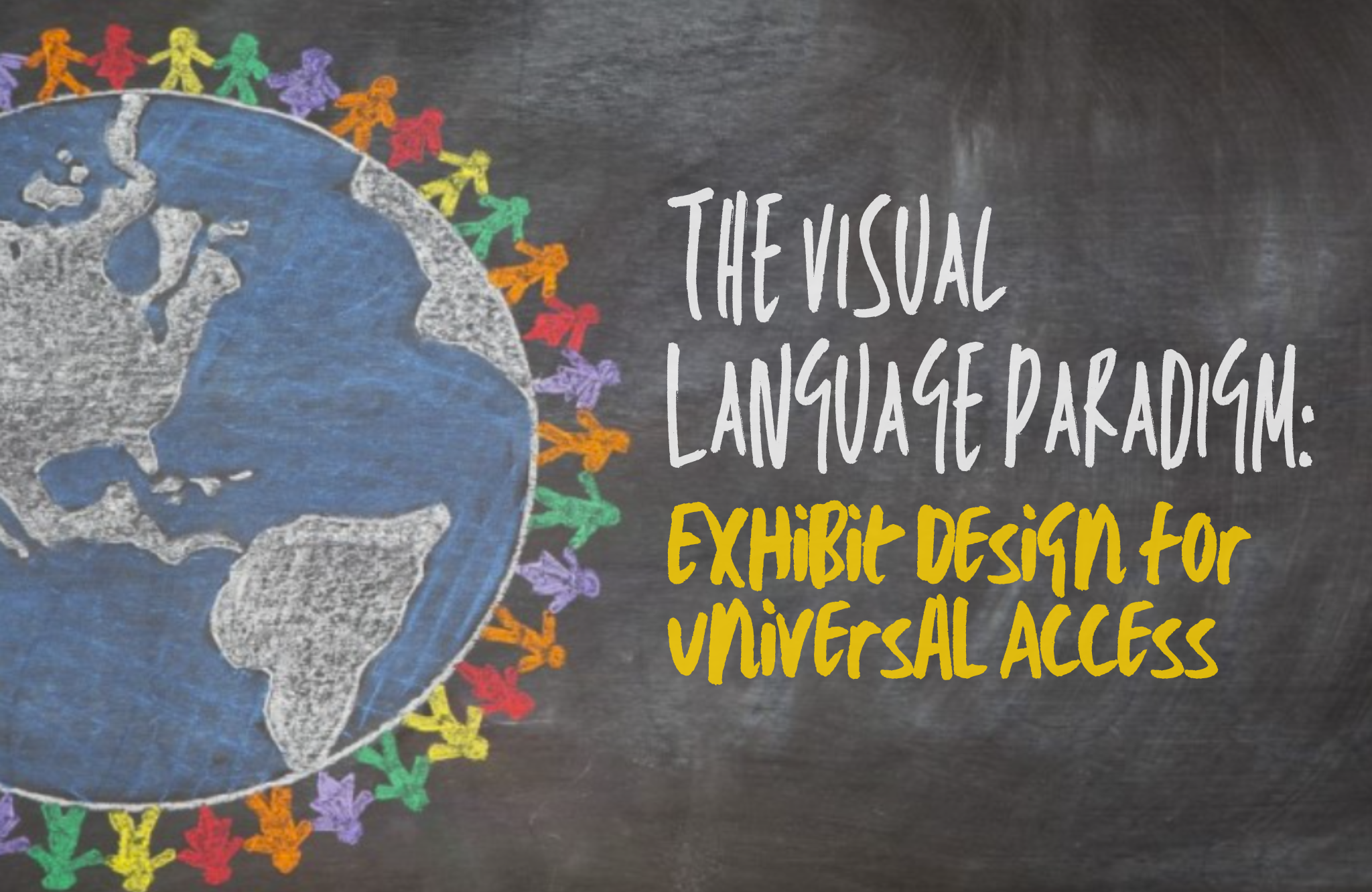The Visual Language Paradigm: Exhibit Design for Universal Access

The Visual Language Paradigm: Exhibit Design for Universal Access
November 7, 2024 by Taylor Studios
Before diving into exhibit design, let’s start this post with a tired truism: a picture is worth a thousand words. Boring, right?
Wrong.
I am a First Generation American. When my family arrived in this country in 1992, only my parents spoke English. Every day of every summer, while school was out of session for me, they went to work. I spent the days with my grandmother. We did all the usual things: played outside, did arts and crafts, saw friends. But most importantly, we took the train to Chicago and went to the museums and zoos. Between her incredibly limited English (please, thank you, help, bathroom) and my elementary school reading level (my earliest museum memories start around kindergarten), we were a pair who may not have gotten much joy out of exhibits. Yet, we did. We came back many times. We spent hours at the Field Museum and Brookfield Zoo. When I got a bit older, we added the Art Institute of Chicago to our travels.
Thinking back, I don’t remember labels, copy, or brochures. I remember images. Without much command of the English language, we didn’t just get by on museum days. We thrived. I am grateful to this day for the exhibit designers, graphic designers, and interpretive planners who kept universal access in mind as they worked. Even without the copy, the exhibits drew me in, took me on a journey, and made sense as stories. Regardless of language or ability, their work was impactful. Looking up at Sue the T. Rex, I didn’t need to know that she was alive during the Cretaceous Period, lived to be 28 years old, or was discovered in 1990 in South Dakota. All I needed to know, I knew by looking at her. She was the center of attention. She pulled my eye as soon as I was through the doors. And once she had me, I knew that this museum was going to be cool. I was willing to walk through every door and look in every corner if it meant seeing another dinosaur, or something equally awesome. No language necessary.
My early museum memories are made up of images like Sue. I remember waxworks of early Homo Sapiens in their rich furs. Without being able to read the copy around them, I understood that they cooked over fires, used every part of the animals they caught, and lived in family structures that looked like my own. I remember colorful pottery from places whose names I didn’t know. I didn’t need to be aware of Greek, Roman, or Mayan history to understand that each culture had its own way of decorating objects and worked with shapes unique to their needs. I remember watching chicks hatch at the Museum of Science and Industry. I never needed to read a word about their life cycle, how long they took to hatch, or the temperature in the incubator. What I remember is marveling at the ways life begins for different creatures.
These core experiences that formed my life-long love of learning were built in such a way that anyone and everyone could enjoy them. As a designer, these memories and the paradigm behind them are always top of mind as I work. Show, don’t tell. A powerful statement piece goes farther than many tiny pieces. The flow of a space tells its story as much as the words that accompany it. Words can be ignored, but feelings can’t. An artifact can speak for itself. Exhibits are for everyone.